Funding and Action Needed for Deerfoot Trail Solutions
This is going to come across as a really obvious comment – folks in southeast Calgary feel very strongly about Deerfoot Trail. For decades Deerfoot has been one of the few transportation options for the tens of thousands of folks that live south of Glenmore Trail and west of the Bow River.
In the spring of 2016 The City of Calgary and Alberta Transportation began a joint study of Deerfoot Trail. The study area focused on Deerfoot from Stoney Trail north to Stoney Trail south. While there have been 17 studies on Deerfoot Trail over the last 20 years, this is the first time a study of this size and scope has been undertaken in more than 20 years.
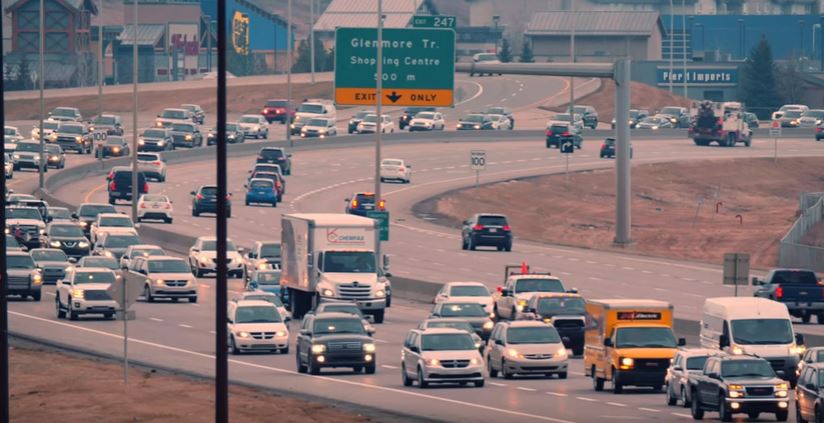
Public engagement was a significant component of this study. I highlighted some of the public feedback from the study in my blog back in December: Deerfoot Trail Study – Public Input Summary . It came as no surprise to me that the highest volume of responses came from southeast Calgary and the key problem areas identified were Southland Drive/Anderson Road and Glenmore Trail.
Phase 1 of the study has concluded and we are moving on to Phase 2:
Last week the project team unveiled five short-term improvement projects. These options needed to satisfy a set of criteria:
- Provide benefits for 5-10 years
- Be designed and implemented within 2 years of being funded
- Offer improvements for problem locations that benefit the entire corridor
- Result in benefits that are greater than the cost within 10 years
5 options have been brought forward for future funding consideration:
11 Street NE to northbound Deerfoot Trail
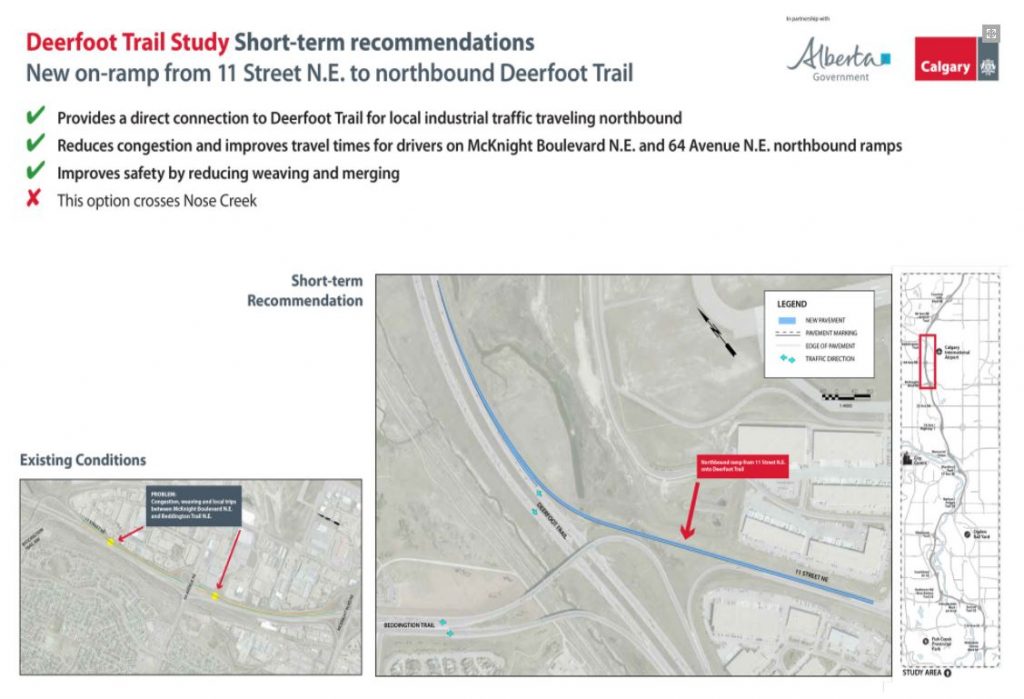
32 Avenue and 12 Street NE
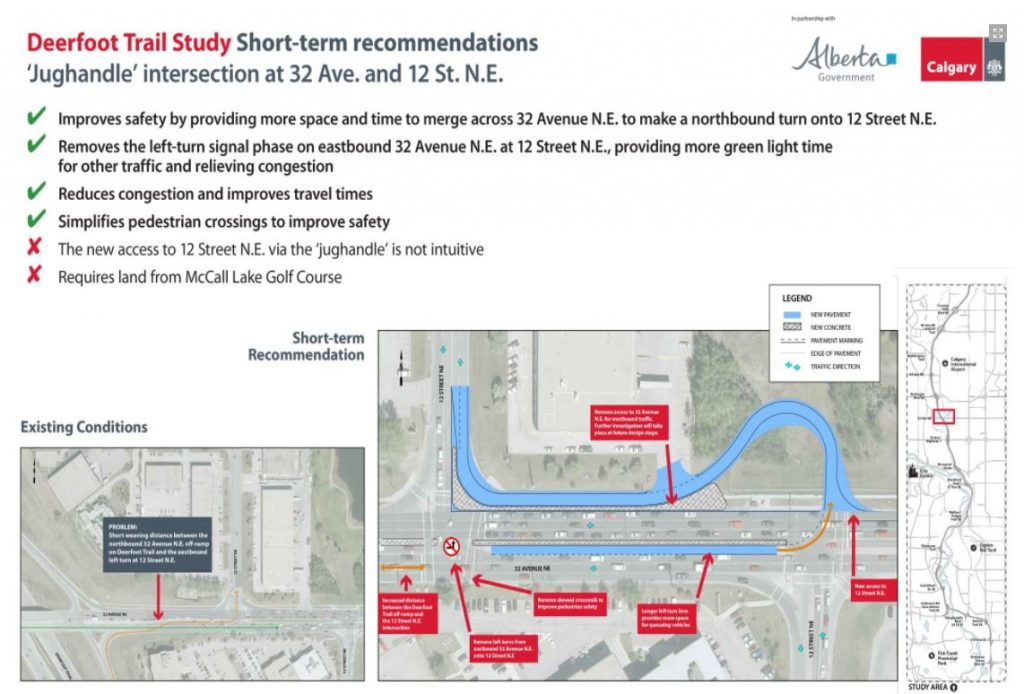
McKnight Boulevard and 12 Street NE/Aviation Boulevard NE
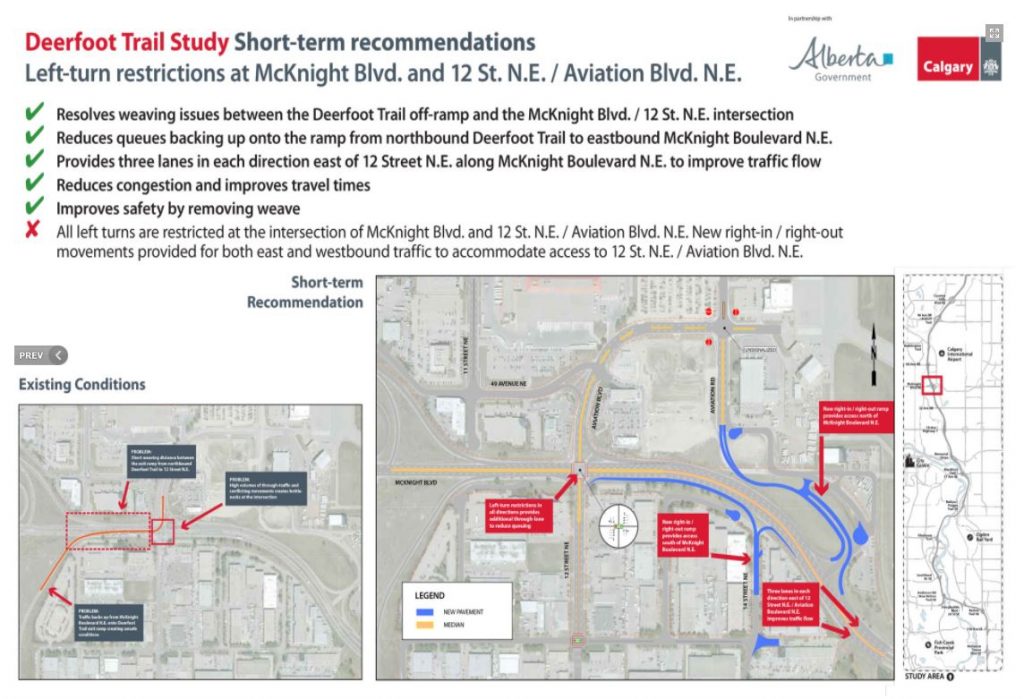
McKnight Boulevard NE to 64 Avenue NE
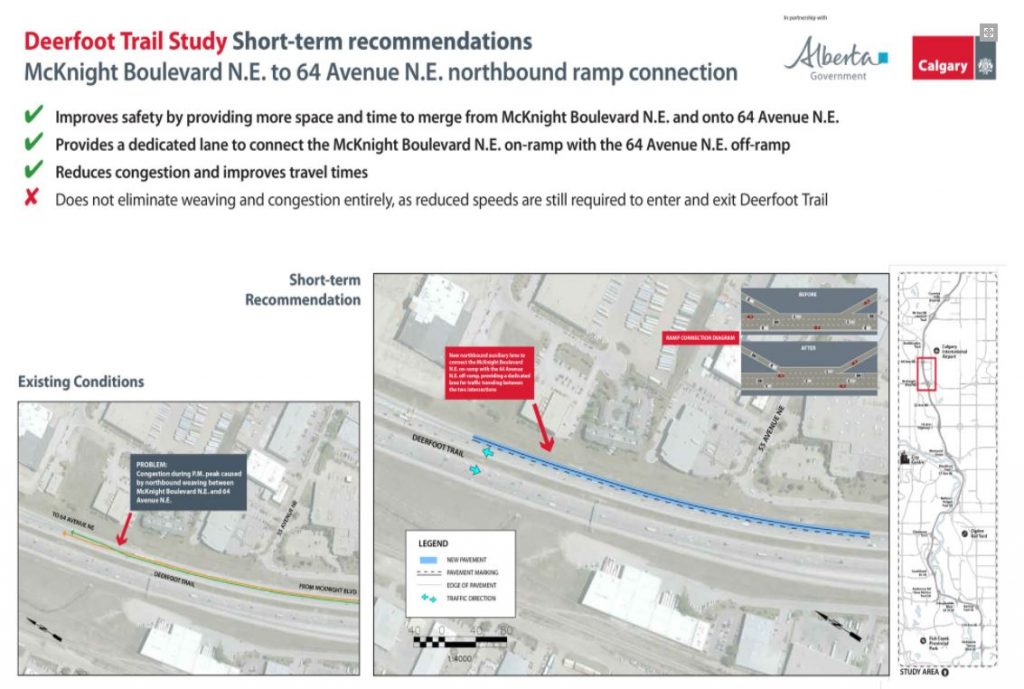
Southland Drive SE to Anderson Road SE
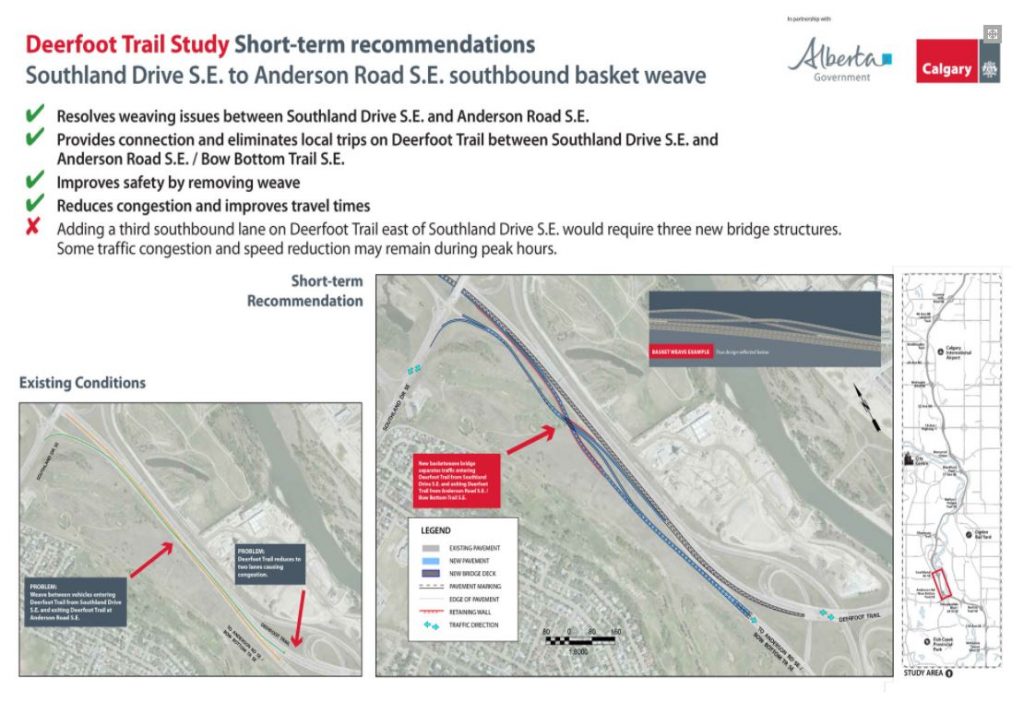
For larger and more clear maps you can visit calgary.ca/deerfoot
This set of projects remains unfunded at this time. Once funded these projects could be operational within 2 years.
Where’s the love for southeast Calgary?
I have heard from some folks in southeast Calgary that they are disappointed the short term projects fail to address northbound Deerfoot at the Anderson/Bow Bottom interchange and the Southland interchange as well as the Deerfoot/Glenmore interchange. Both areas will be addressed in Phase 3 and Phase 4 of the study as the fixes in those locations do not fit the criteria for the short term projects.
Studies are important when we look at a roadway like Deerfoot Trail. We cannot look at single points on a map while ignoring the transportation impacts along the entire corridor. Extending a lane or addressing a pinch point at one location may just move the issue further along the corridor or move the issues to a different roadway altogether. Detailed studies ensure we are putting the right solutions in the right places.
Relief is coming for southeast Calgary
There is reason to be optimistic in southeast Calgary. With the recent decision on Phase 1 of the Green Line LRT we can now look forward to high volume reliable mass transit in the southeast anticipated for 2026. Below is a video I launched last year that talked about the stress reduction our transportation network will enjoy with LRT service. The benefits for southeast Calgary will continue to grow as future phases push deeper into the fastest growing communities in the city.
While relief is on the way with Green Line, 2026 is a long time for communities in southeast Calgary to wait. That is why it is critical we move forward on addressing problem areas along Deerfoot Trail. As Deerfoot remains a provincial highway, we must continue to work with our colleagues at Alberta Transportation to find a way to fund and deliver these upgrades. Funding the projects identified in Phase 2 is important, but we also need to be prepared for the more comprehensive projects that will be coming with Phase 4 in the winter of 2018.
There are two key points of advocacy that I plan on working towards –
- Action: Studies are great, but they need to result in action. The options that have been brought forward will be very helpful for Calgarians, but we need to work hard to make sure they actually happen. This study won’t offer much benefit to Calgarians if it just collects dust on a shelf somewhere. We cannot keep passing along the responsibility to correct the issues on Deerfoot. Action needs to happen soon.
- Funding: We must find funding. There seem to be an endless number of asks for a limited amount of money. When we go to our colleagues in the provincial government we need to be very clear on what our priorities are. Deerfoot is obviously a provincial responsibility, but the benefits of investing in Deerfoot permeate all orders of government. So what priorities do we want to see the province invest in? A new arena? An Olympic bid? Green Line? Providing that clarity is important. We can’t do it all, so it is important to make the right choices.
The province has been a partner throughout the study so they are keenly aware of the options being brought forward. I intend to work with my provincial colleagues to continue moving this study forward and find ways to fund these projects. I’m sure opportunities for cost sharing do exist. I look to the recent funding partnership that allowed for the 212 th Avenue SE/Deerfoot Trail interchange to move forward . Perhaps there are additional opportunities for the private sector to make investments in Deerfoot upgrades. Those possibilities need to be explored and embraced where appropriate.
Deerfoot Trail makes a difference in the lives of many Calgarians. Sadly that difference is not always positive. This study is going to give us a unique opportunity to bolster transportation networks in areas of Calgary that currently lack suitable alternatives. Deerfoot upgrades and Green Line LRT are exciting steps forward for folks that live in southeast Calgary. These two interconnected projects have momentum right now and it is critical that we continue to move transportation investments forward. Growth will continue at a rapid rate in southeast Calgary. If we think these upgrades are needed now, imagine where we will be in 10 years time. Ignoring the need for these investments now will come with significant consequences in the future.
